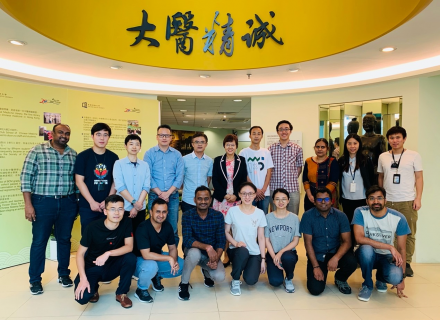



Research led by Professor Li Min, Associate Dean of SCM and Director of Mr. and Mrs. Ko Chi Ming Centre for Parkinson’s Disease Research, together with Dr. Lu Jiahong from the Institute of Chinese Medical Sciences at the University of Macau, has revealed a new mechanism of the autophagy-related gene NRBF2 (Nuclear Receptor Binding Factor 2) in regulating the fusion of autophagosomes with lysosomes, and the degradation of Alzheimer's disease-associated pathological protein, which suggests a potential new therapeutic strategy for the disease. The findings were recently published in the internationally reputed academic journal Autophagy.
Alzheimer's disease (AD) is the most common neurodegenerative disease, affecting 4-8% of the elderly population worldwide. As the disease progresses, a person with AD will develop severe memory impairment and gradually lose the ability to carry out everyday tasks. One of the main characteristics of AD is the accumulation of plaques that contain amyloid protein (Aβ) in the brain. A previous study jointly conducted by Prof Li’s and Dr. Lu’s teams found that NRBF2 is reduced in the hippocampus of AD animal models and that it plays an important role in regulating Aβ homeostasis (Autophagy, 2017). This study has demonstrated, for the first time, that NRBF2 promotes the fusion of autophagosomes with lysosomes by modulating the CCZ1-MON1A-RAB7 system, which facilities the degradation of the C-terminal fragment of the amyloid precursor protein and reduces the formation of amyloid. This finding not only provides novel insights into how NRBF2 regulates autophagy, but also suggests a potential therapeutic approach to Alzheimer's disease, i.e. modulating the fusion of autophagosomes with lysosomes.
This project was supported by the General Research Fund of the Research Grants Council in Hong Kong (GRF/HKBU12101417, GRF/HKBU12100618), and the National Natural Science Foundation of China (81703487, 81773926). Professor Li and Dr. Lu are the co-corresponding authors of the published research. For more information about the study, please visit: https://www.tandfonline.com/doi/full/10.1080/15548627.2020.1760623



